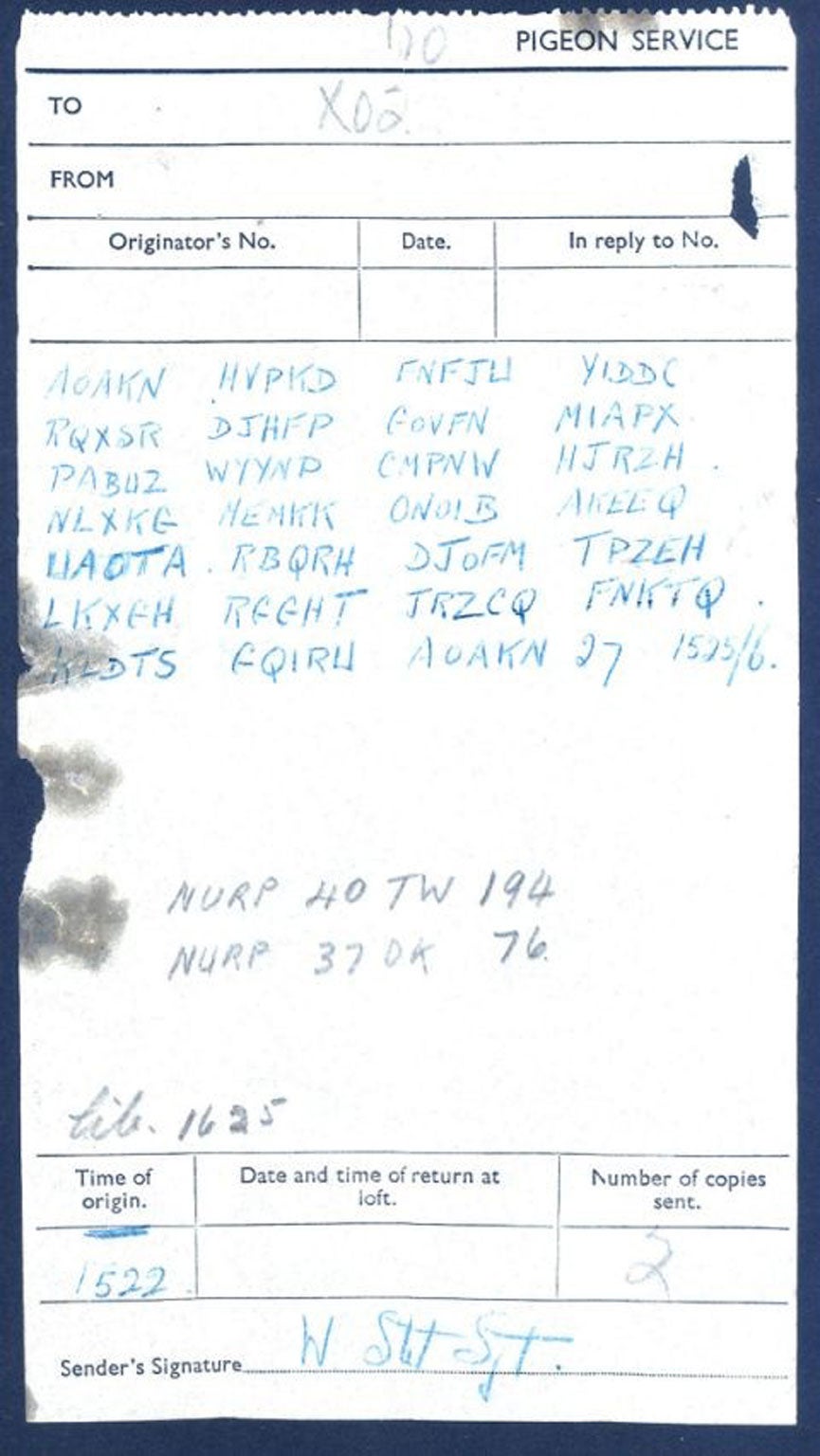WWII code experts called in to help solve mystery of the pigeon’s foot
GCHQ turn to Bletchley Park veterans for help with D-Day cipher

Your support helps us to tell the story
From reproductive rights to climate change to Big Tech, The Independent is on the ground when the story is developing. Whether it's investigating the financials of Elon Musk's pro-Trump PAC or producing our latest documentary, 'The A Word', which shines a light on the American women fighting for reproductive rights, we know how important it is to parse out the facts from the messaging.
At such a critical moment in US history, we need reporters on the ground. Your donation allows us to keep sending journalists to speak to both sides of the story.
The Independent is trusted by Americans across the entire political spectrum. And unlike many other quality news outlets, we choose not to lock Americans out of our reporting and analysis with paywalls. We believe quality journalism should be available to everyone, paid for by those who can afford it.
Your support makes all the difference.Britain’s top code-breakers have appealed for public help to crack a secret Second World War code found attached to the leg of a dead pigeon.
The message was discovered by David Martin after he ripped out a fireplace and found the bird’s skeleton while renovating his house in Bletchingley, Surrey.
Historians believe the pigeon was almost certainly dispatched from Nazi-occupied France during the D-Day invasions of 6 June 1944. Attached to its leg was a red canister and a piece of paper headed “Pigeon Service”, with 27 handwritten blocks of code in the canister.
The mysterious message was passed to Government Communications Headquarters (GCHQ) in Cheltenham, in the hope that its codebreakers could decipher the words.
But GCHQ’s experts say they are unable to unravel the puzzle without knowing more about the cryptographic context in which it was sent. They have now appealed to retired codebreakers who worked at GCHQ’s predecessor, Bletchley Park, and others who may have worked in military signals during the war to offer their expertise.
Those who are still alive are likely to be in their nineties but their memories may be sharp enough to recognise the type of code used, and explain how it could be deciphered.
Experts believe it could be a one-off encryption for which only the sender and the recipient would have had a key, rendering it almost certainly unbreakable, or that it was based on a specific codebook for a particular operation. If the codebook has since been destroyed, that would also make the cipher virtually unbreakable.
More than 250,000 carrier pigeons were used as secret messengers in the Second World War and each had an identity number. There are two pigeon identification numbers in the message – NURP.40.TW.194 and NURP.37.OK.76 –but it is unclear which one relates to the bird in the chimney.
A GCHQ historian told the BBC: “There are still quite a lot of people alive who worked in communications centres during the war and who might have some knowledge about this and it would be very interesting if anyone did have information if they could put it in the pot and we could see if we could get any further with it.”
The only part of the message that has been deciphered is that of its intended destination – that of Bomber Command, referred to as XO2, while the sender’s signature at the bottom of the message read Serjeant W Stot.
The spelling of “Serjeant” is thought to be significant, as the RAF used “j” while the Army used “g”. It is thought the bird’s destination was Bletchley Park, 80 miles from Mr Martin’s home. The Royal Pigeon Racing Association believes the bird probably either got lost, disorientated in bad weather, or was exhausted after a long journey.
Join our commenting forum
Join thought-provoking conversations, follow other Independent readers and see their replies
Comments